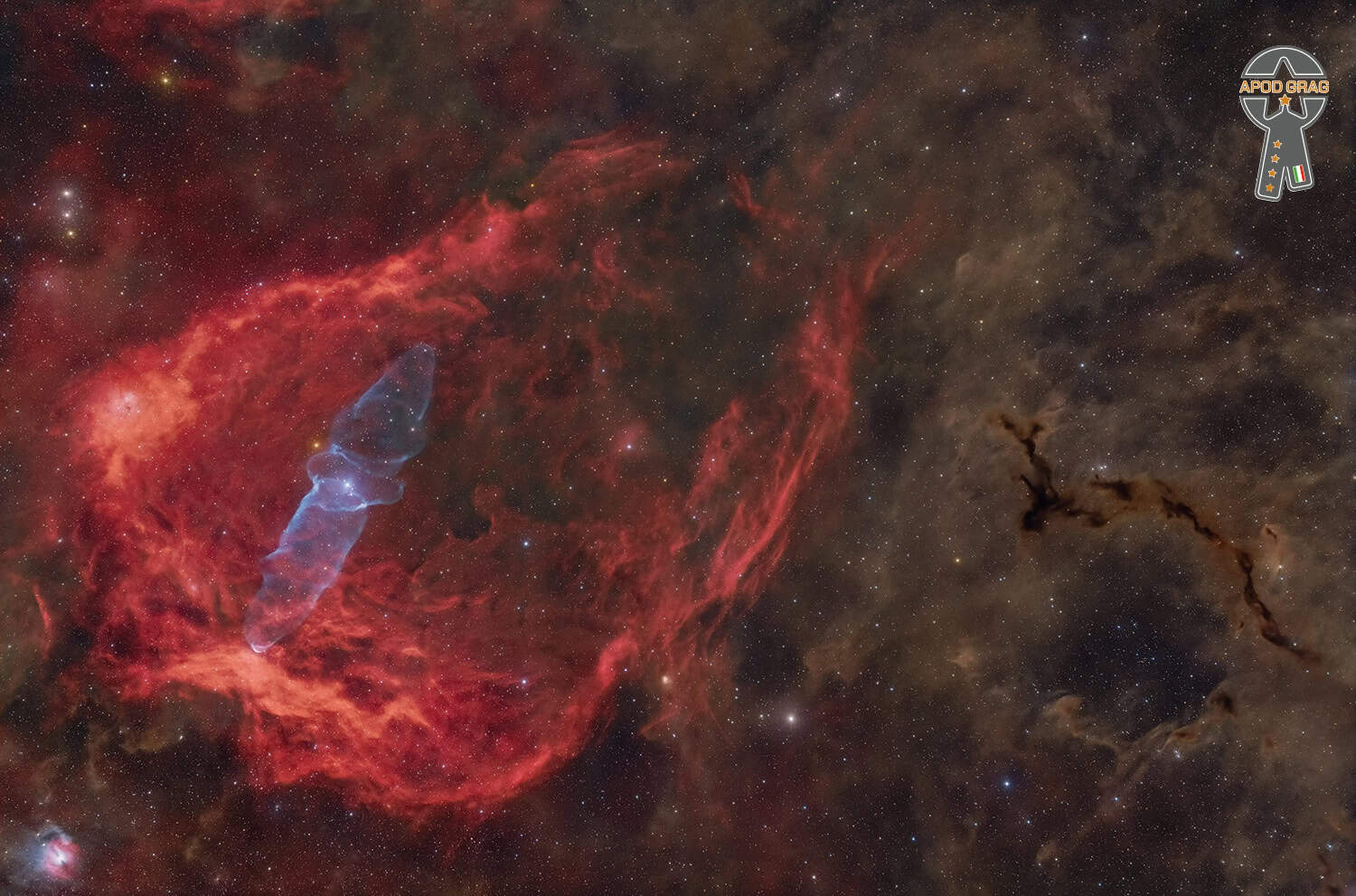Cosmo Sh2-129, Ou4, Barnard 150 & LBN 446
Today, we take you to the constellation Cepheus, to explore a fascinating celestial landscape where Earth and Sea seem to meet — at least in appearance. This region is particularly rich in dark and emission nebulae, offering a striking contrast between shadow and light.
At the heart of this image are several iconic objects, each located at impressive distances from Earth:
Barnard 150, also known as the Seahorse Nebula, is a dark nebula located approximately 1,200 light-years away. This column of interstellar dust stands out in silhouette, blocking the starlight behind it. It is also an active star-forming region, where young stars remain deeply embedded in their dusty cocoons.
The Flying Bat Nebula (Sh2-129) lies about 1,300 light-years from us. This large emission nebula, dominated by ionized hydrogen, spans several light-years and reveals delicate, filamentary structures.
Nestled within its glowing red wings is the Squid Nebula (Ou4), an extremely faint bipolar nebula, visible mainly in OIII (doubly ionized oxygen). Its distance is estimated between 2,300 and 2,700 light-years. Its shape resembles a cosmic squid gliding through the hydrogen sea of the Flying Bat.
LBN 446 completes this celestial tableau. It is a reflection nebula interwoven with faint dust structures, located about 1,200 light-years away. It adds a soft, bluish glow to the region, enhancing the feeling of drifting through an ocean of interstellar matter.
